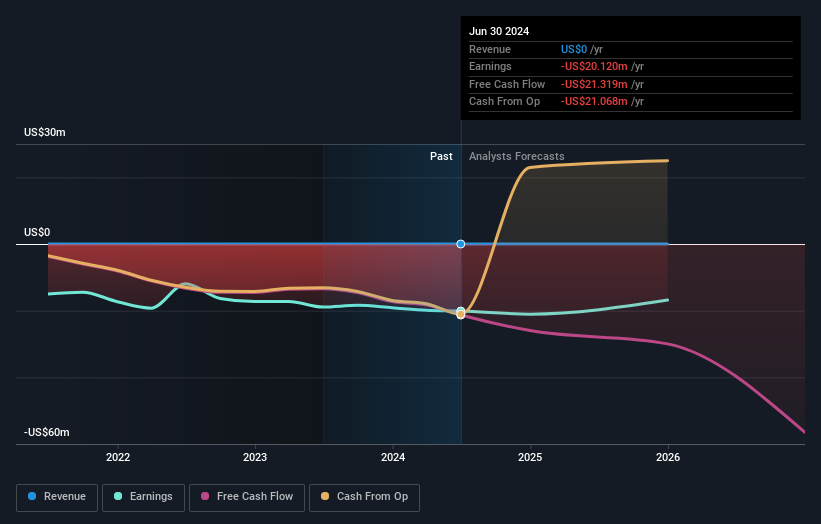- Canada
- /
- Metals and Mining
- /
- TSX:CNL
Collective Mining Ltd.'s (TSE:CNL) market cap up CA$40m last week, benefiting both individual investors who own 55% as well as insiders

Key Insights
- Significant control over Collective Mining by individual investors implies that the general public has more power to influence management and governance-related decisions
- A total of 17 investors have a majority stake in the company with 45% ownership
- 33% of Collective Mining is held by insiders
A look at the shareholders of Collective Mining Ltd. (TSE:CNL) can tell us which group is most powerful. The group holding the most number of shares in the company, around 55% to be precise, is individual investors. That is, the group stands to benefit the most if the stock rises (or lose the most if there is a downturn).
Following a 13% increase in the stock price last week, individual investors profited the most, but insiders who own 33% stock also stood to gain from the increase.
Let's delve deeper into each type of owner of Collective Mining, beginning with the chart below.
View our latest analysis for Collective Mining

What Does The Institutional Ownership Tell Us About Collective Mining?
Many institutions measure their performance against an index that approximates the local market. So they usually pay more attention to companies that are included in major indices.
As you can see, institutional investors have a fair amount of stake in Collective Mining. This implies the analysts working for those institutions have looked at the stock and they like it. But just like anyone else, they could be wrong. It is not uncommon to see a big share price drop if two large institutional investors try to sell out of a stock at the same time. So it is worth checking the past earnings trajectory of Collective Mining, (below). Of course, keep in mind that there are other factors to consider, too.

We note that hedge funds don't have a meaningful investment in Collective Mining. Our data suggests that Ari Sussman, who is also the company's Top Key Executive, holds the most number of shares at 16%. When an insider holds a sizeable amount of a company's stock, investors consider it as a positive sign because it suggests that insiders are willing to have their wealth tied up in the future of the company. Meanwhile, the second and third largest shareholders, hold 7.5% and 6.0%, of the shares outstanding, respectively. In addition, we found that Omar Ossma, the CEO has 0.7% of the shares allocated to their name.
On studying our ownership data, we found that 17 of the top shareholders collectively own less than 50% of the share register, implying that no single individual has a majority interest.
While studying institutional ownership for a company can add value to your research, it is also a good practice to research analyst recommendations to get a deeper understand of a stock's expected performance. There is a little analyst coverage of the stock, but not much. So there is room for it to gain more coverage.
Insider Ownership Of Collective Mining
The definition of an insider can differ slightly between different countries, but members of the board of directors always count. Company management run the business, but the CEO will answer to the board, even if he or she is a member of it.
Insider ownership is positive when it signals leadership are thinking like the true owners of the company. However, high insider ownership can also give immense power to a small group within the company. This can be negative in some circumstances.
Our most recent data indicates that insiders own a reasonable proportion of Collective Mining Ltd.. Insiders own CA$107m worth of shares in the CA$325m company. This may suggest that the founders still own a lot of shares. You can click here to see if they have been buying or selling.
General Public Ownership
The general public -- including retail investors -- own 55% of Collective Mining. With this amount of ownership, retail investors can collectively play a role in decisions that affect shareholder returns, such as dividend policies and the appointment of directors. They can also exercise the power to vote on acquisitions or mergers that may not improve profitability.
Next Steps:
I find it very interesting to look at who exactly owns a company. But to truly gain insight, we need to consider other information, too. For example, we've discovered 4 warning signs for Collective Mining (2 are concerning!) that you should be aware of before investing here.
Ultimately the future is most important. You can access this free report on analyst forecasts for the company.
NB: Figures in this article are calculated using data from the last twelve months, which refer to the 12-month period ending on the last date of the month the financial statement is dated. This may not be consistent with full year annual report figures.
New: AI Stock Screener & Alerts
Our new AI Stock Screener scans the market every day to uncover opportunities.
• Dividend Powerhouses (3%+ Yield)
• Undervalued Small Caps with Insider Buying
• High growth Tech and AI Companies
Or build your own from over 50 metrics.
Have feedback on this article? Concerned about the content? Get in touch with us directly. Alternatively, email editorial-team (at) simplywallst.com.
This article by Simply Wall St is general in nature. We provide commentary based on historical data and analyst forecasts only using an unbiased methodology and our articles are not intended to be financial advice. It does not constitute a recommendation to buy or sell any stock, and does not take account of your objectives, or your financial situation. We aim to bring you long-term focused analysis driven by fundamental data. Note that our analysis may not factor in the latest price-sensitive company announcements or qualitative material. Simply Wall St has no position in any stocks mentioned.
About TSX:CNL
Collective Mining
An exploration and development company, focuses on identifying and exploring prospective gold projects in South America.
Flawless balance sheet low.


